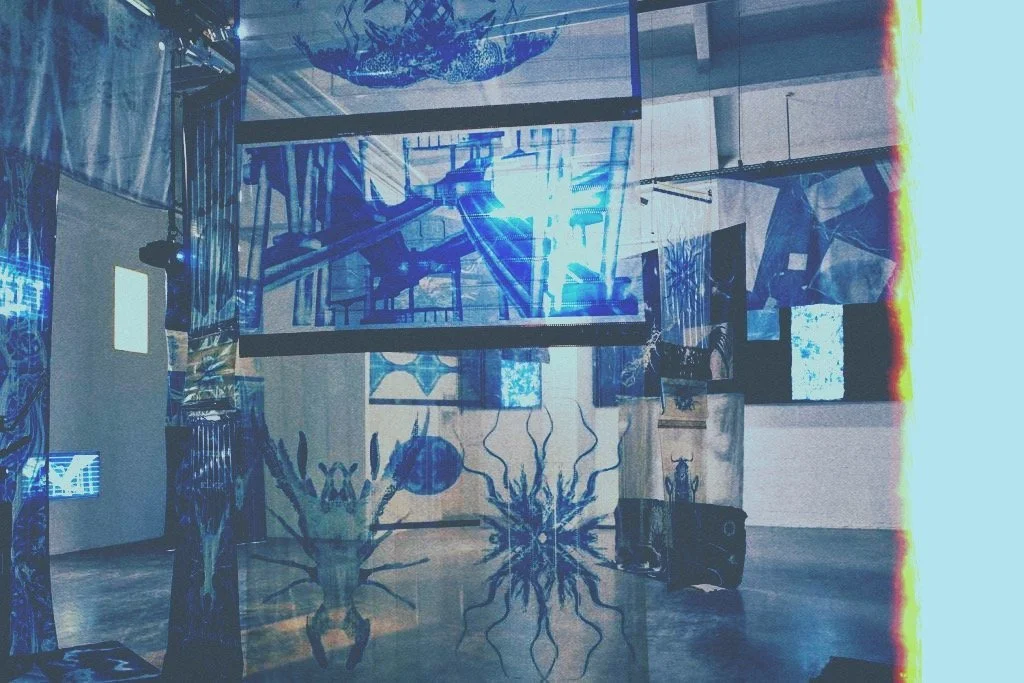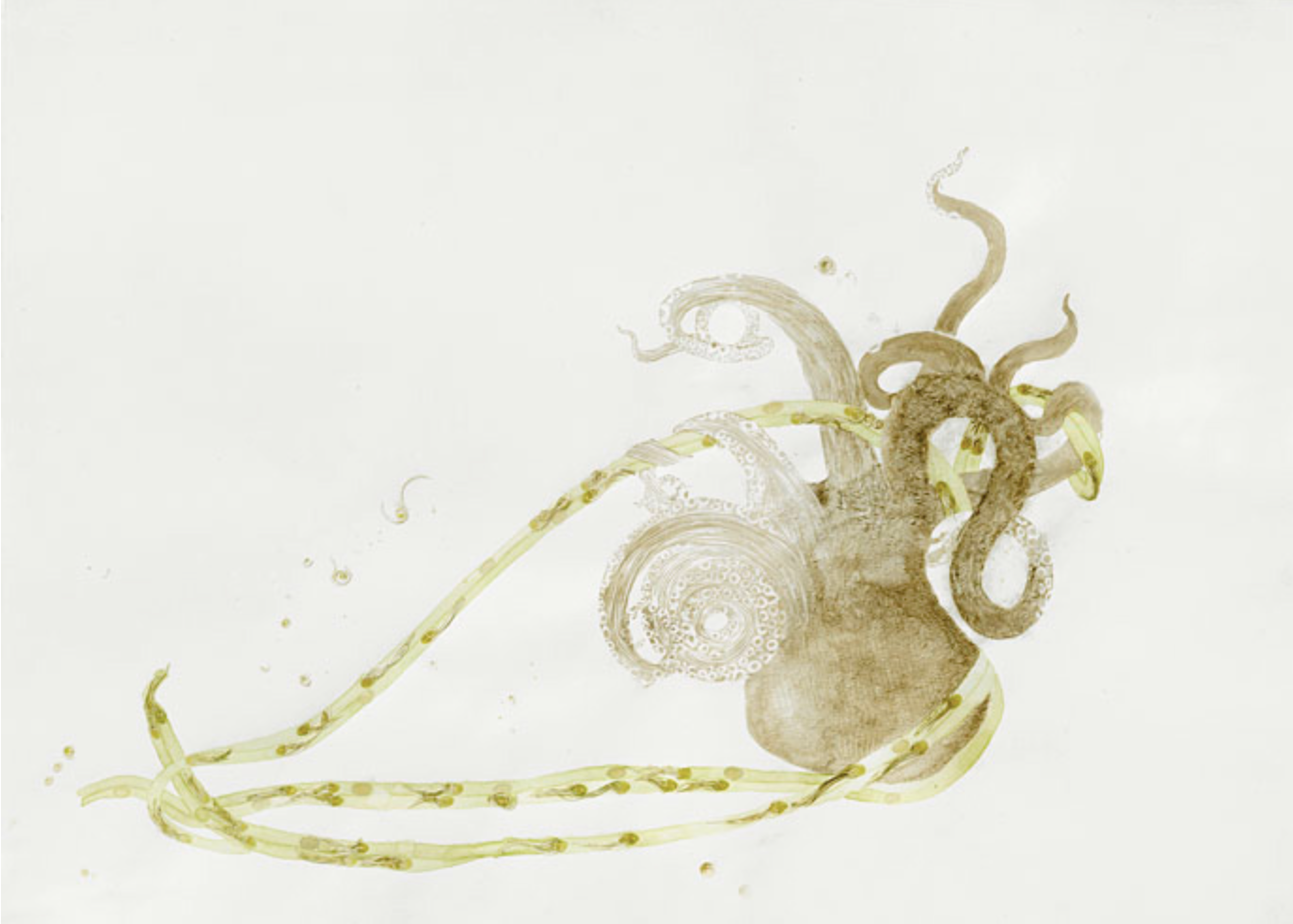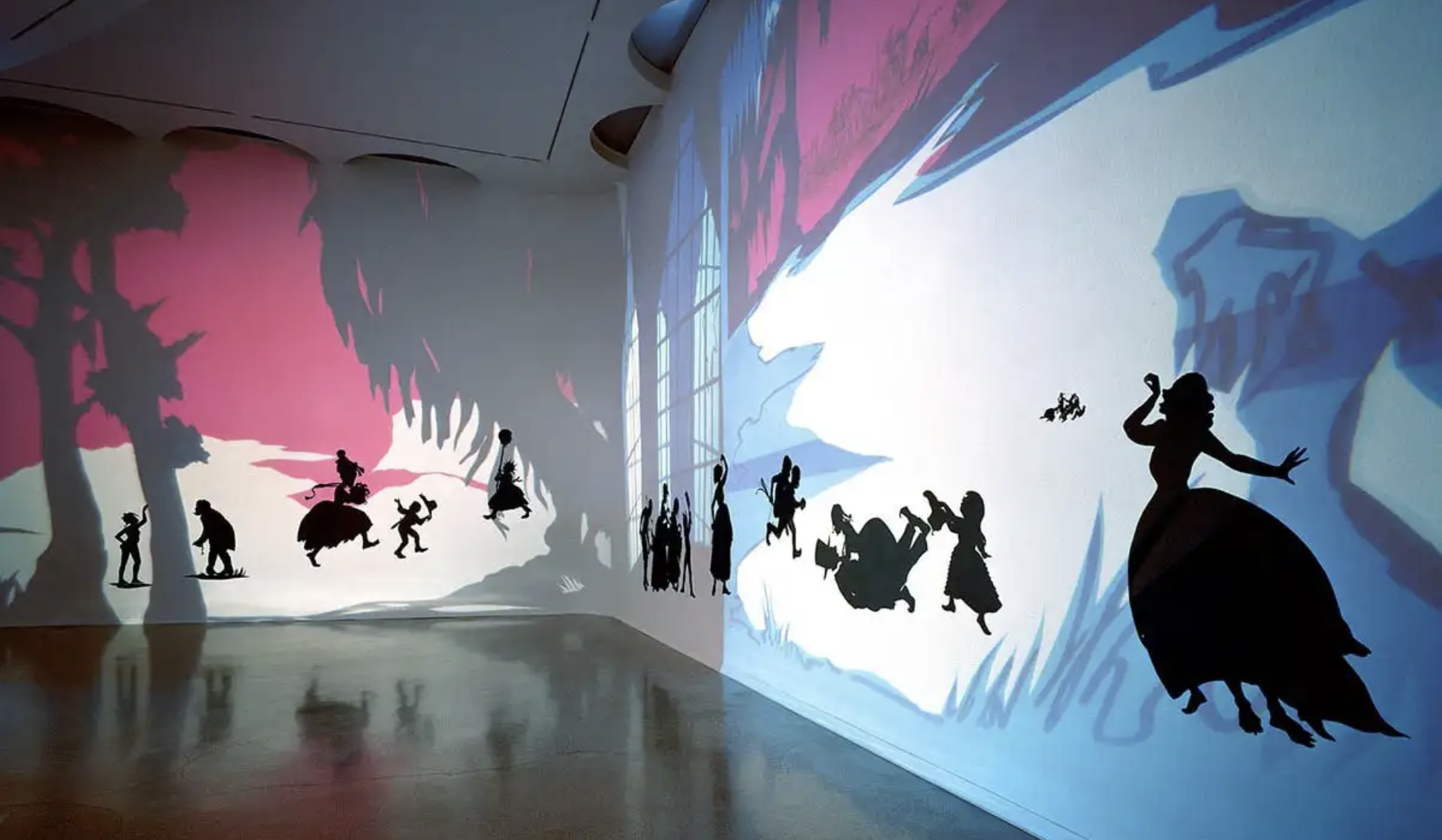Cover Image Gallagher E, Liquid Intelligence (2019)
Identify how artist research can help you consider how the use of limited tools and materials can extend your understanding of what drawing can be.
ROMARE BEARDEN
Fig.1 Bearden R, The Block (1971)
I didn’t know him at all. I looked at the work and I saw collage, and obviously there was a story being manifested. And that was all. For now.
Then I began to read. Like the trains journeying through his collages I journeyed through his life, and I experienced…………
Personal Memories
African- American Culture
African Sculpture
Influencers/Contemporaries
Varied places
Socio-political Movements
Biblical tales
Jazz and Blues
Snap shot vistas that fire at you through a train window, I inhaled all this to feel a connection to the stories he so vibrantly wanted us tell us.
There is symbolism in the work, reoccurring images of large hands, trains, wood dwellings. And this repetition adds to the sincerity of his message. That these works are not incidental. And they are not fragments of an imagination. They are cemented into consciousness.
He collected papers from magazines, journals, photographs. Manipulating the paper before or after application, and this provided many ways of expressing texture, form, depth. And the compositions took on a rhythm influenced by the tempo changes in the music he surrounded himself with.
You can see the initial influence of De Hooch and Japanese prints that leant their use of staging to narrate his scenarios. And that Picasso, Matisse, and Cezanne inspired a way to express the subjective. By flattening the compositions and using distortion, and mark making to reinvent their purpose.
Bearden said: “People have asked me why I use the collage. I find that when some detail such as a hand or an eye is taken out of its original context and placed in a different space and form configuration, it acquires a different quality. In such a process the meaning is extended.”
Collage gave him the opportunity to get straight into manifesting his stories. With little room for debate as to what you were looking at. The work became almost journalistic in nature. The block II.
Economically it takes away the laborious task of studying and reproducing (in traditional materials) all the characters and subjects, but simultaneously opening up many new techniques.
The earlier collages (smaller in scale), invite you in, to study the small details, they are modest in size compared to the larger scale work that followed and became much more imposing.
His work shows how there can be a continuous time line ever evolving a piece or an idea, He reworked his painting and collages, one example being the Photostats (Conjur Woman) which are large scale photo reproductions of his smaller works.
A pride in tradition and a desire to preserve a culture. And also a quiet observation. Not a protesting nature, or anger but a retelling of stories. A reflection of a life lived.
ELLEN GALLAGHER
Fig.2 Gallagher E, Watery Ecstatic (2003)
Fig.3 Gallagher E, Watery Ecstatic (2003)
Many complex themes and emotions are imbued in the works of Ellen Gallagher. Within the delicate execution of her cut outs lurk tragic themes.
In particular her Watery Ecstatic Series.
Inspired by a mythical underwater world born from the dead children of pregnant West African women, who were thrown overboard during the Trans Atlantic slave trade.
She creates both abstract and scientific marine animals by cutting out their forms from heavy duty watercolour paper. A technique derived from cutting into the frustrating air bubbles which were created when painting. And influenced by the art of Scrimshaw, carving into whale bones and ivory, etc.
She compared her experience of making incisions, similar to the cutting of flesh. And I relate her process to an autopsy like technique, not just creating topographically on to the paper, but dissecting it to manifest her subjects and theories.
Her choice of paper, stark and white, to represent all the things that die in the ocean eventually turn white.
And longevity. Her paper having anti fade properties, unlike the paintings that eventually darken with time. Preserving this white utopian appearance.
In her large scale paintings there are also cut out elements. Where she has taken forms from the natural world and laid them into a beds of thick paint. Their incisions once again are very relevant, maybe more relevant than the actual cut out. There is an intention to them, like a drawn line made by a drawing or painting tool. She refers to her layers as skin, and there’s a biology to her process.
Her work exposes absolute theories as ambiguous, once you agitate and disturb their foundations. And perhaps also a sense of fantasy to sweeten the tragic stories from history. By cutting and disjoining her subjects she uncovers their vulnerability.
The act of cutting and placing as her chosen medium is a conscious choice to represent and express a connection to the subjects and their stories. It’s theatrical, very surgical, moving into connotations of death and lifelessness. Yet also informative and intelligent.
I believe it instructs the audience to question their apathy to stories unrelated to themselves, and experience a sense of fantasy.
KARA WALKER
Fig.4 Walker K, Insurrection! Our Tools Were Rudimentary, Yet We pressed On (2000)
Large scale collages. Disturbing, but initially made palatable by the use of silhouette cuts outs, almost like something you’d find in a children’s book, and reminiscent of the 18th century Victorian ladies art of shadow portraits.
But these shadow puppet style characters are acting out haunting historical injustices, based on slavery, violence, subjugation, and sexuality.
And they are taking these violent acts of the past, and reminding us of the present psychological damage that still remains.
The work is sometimes extended into more theatrical proportions by adding colourful wall projections. An addition to their storytelling nature, that is drawing you further into the experience and these uncomfortable experiences that the characters are acting out.
They become more intriguing as I learn that she challenges the well known stories of history by deliberately misrepresenting the characters stereotypes, in respect of how there is always more than one story to tell.
Because of their large scale, recognisable, and monotone form, you begin with a sense that you know what your looking at, but then quickly realise that there is an abstract nature to them. Things don’t quite make sense. And there in lies the truth. That in life there are many different versions of the the same tale.
The opaque silhouettes have a naturally haunting nature. Like apparitions they torment the walls with their stories. Removing the option of excess detail found in other drawing mediums makes them appear less friendly, less familiar.
CONCLUSION
For me limitations are, ironically, aids. But sometimes the elements are so infinite that you have to set some sort of perimeter to begin. But within that perimeter a portal is opened and we access the infinite again.
For each artist researched here I had to set some limits on my approach to tackling the extent of knowledge available to me.
‘To gather information on a list of artists + Development of technology = Unlimited information to be gathered on the list of artists!
And then what. Dealing with the mountainous configurations of facts. All very relevant and educational. But at some point one must detach oneself and look at how the work and the artists as practitioners has influenced your own thought process.
I have concluded from my introduction to paper cut art, that it’s apparent simple nature provides a vehicle for complex and loaded themes.
It has many guises. It can be childlike, crude, detailed, overwhelming. Massive. Disturbing and creepy like an autopsy. Surgical.
My favourite take away is the idea that’s it’s not just about what you have cut out (the shape, or image). But also the ‘cut’. How you cut it. Maybe jagged and abstract like a rough brushstroke. Or the incision, surgical. And it’s placement, the cut line accessing the negative space, having as much meaning as the tapestry it belongs too.
Now I am able to look at the work with a curiosity that wasn’t there before. These artists have educated and moved me in ways that were not altogether comfortable.
Experiences become memories
Memories fade with the people who held them
And then they can only be held by the ones who chose to honour them
List of Images
Cover Image Gallagher, E. (2019) Liquid Intelligence. [Installation, Photo, edited with Hipstamatic] At: https://flash—art.com/2019/04/ellen-gallagher-edgar-cleijne-wiels-brussels/ (Accessed 12/07/2024).
Fig.1 Bearden, R. (1971) The Block. [Collage]
Fig.2 Gallagher, E. (2003) Watery Ecstatic. [Watercolour and cut paper on paper]
Fig.3 Gallagher, E. (2003) Watery Ecstatic. [Watercolour, pencil, varnish and cut paper on paper]
Fig.4 Walker, K. (2000) Insurrection! Our Tools Were Rudimentary, Yet We pressed On. [Installation]
Bibliography
ROMARE BEARDEN
Alder, E. (2022) ‘Romare Bearden’s Multiplicity’ In: MoMA 01/11/2022. At: https://www.moma.org/magazine/articles/797 (Accessed 20/12/2023).
Alexandria, V (2003) ‘The Art Of Romare Bearden, A Resource For Teachers’. At: https://www.nga.gov/content/dam/ngaweb/Education/learning-resources/teaching-packets/pdfs/bearden-tchpk.pdf (Accessed 20/12/2023).
MoMA (2022) ‘Art and Artists’. At: https://www.moma.org/collection/works/36567(Accessed20/12/2023).
‘Painting of the Day’. At: https://aestheticapperceptions.wordpress.com/2013/07/22/painting-of-the-day-95/ (Accessed 20/12/2023).
ELLEN GALLAGHER
Art21. (2014) Ellen Gallagher: Cutting | Art21 “Extended Play”. At: https://www.google.com/search?q=ellen+gallagher+cut+outs&source=lmns&bih=713&biw=1359&client=safari&hl=en&sa=X&ved=2ahUKEwib-7PJ7aCDAxVuMOwKHfyYC8QQ0pQJKAB6BAgBEAI#fpstate=ive&vld=cid:39cfebcf,vid:zsENZ0CwYpc,st:0 (Accessed 21/12/2023).
Ellen Gallagher Hon RA (b 1965). At: https://www.royalacademy.org.uk/art-artists/name/ellen-gallagher-hon-ra (Accessed 21/12/2023).
Gallery Max Hetzler. Ellen Gallagher. At: https://www.maxhetzler.com/exhibitions/ellen-gallagher-drawings-series-watery-ecstatic-zimmerstrasse-9091-berlin-mitte-june-06-july-26-2003-murmur-animation-2003 (Accessed 21/12/2023).
The Broad. (2024) Watery Ecstatic Series. At: https://www.thebroad.org/art/ellen-gallagher/watery-ecstatic-series(Accessed 21/12/2023).
KARA WALKER
Art and Artists, Kara Walker At: https://walkerart.org/collections/artists/kara-walker (Accessed 21/12/2023).
Kara Walker. At: https://www.sikkemajenkinsco.com/kara-walker Accessed 21/12/2023).
Newman, S. (2017) Kara Walker: Dark Shadows Of History. At: https://americanart.si.edu/blog/eye-level/2017/13/56544/kara-walker-dark-shadows-history (Accessed 21/12/2023).




